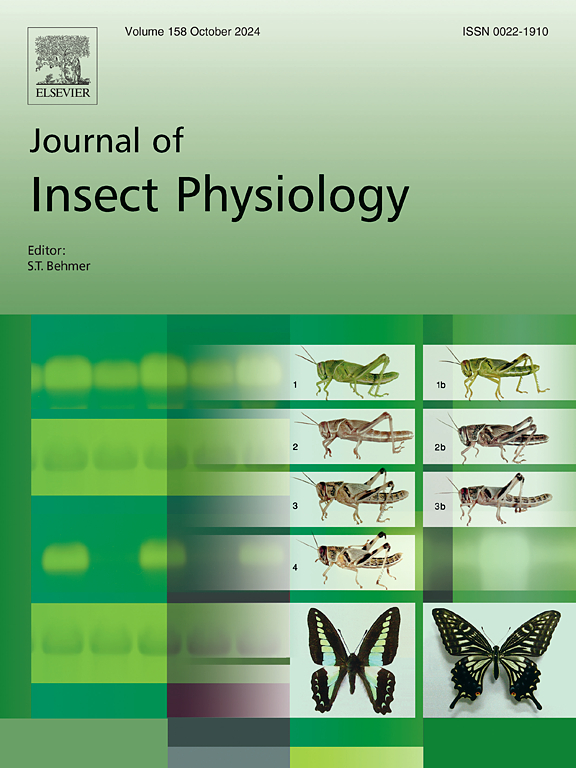Fat bodies responsible for the degradation of encapsulated foreign substances in the body cavity of Mythimna separata larvae
IF 2.3
2区 农林科学
Q1 ENTOMOLOGY
引用次数: 0
Abstract
In the immune systems of insects, the fat body synthesizes most of the immune proteins found in the hemolymph. We investigated a novel role for the fat body in immune processing of encapsulated parasitoid larvae using fat bodies from Mythimna separata (Ms) larvae. When first instar larvae of Cotesia kariyai (Ck) were transplanted into Ms larvae, time-dependent melanization and encapsulation occurred, and the surface area of Ck larvae began to decrease 24 h post-transplantation. Histological analysis revealed physical contact between encapsulated Ck larvae and the fat body of the host. In vitro co-culture experiments showed that the size of Ck larvae decreased significantly when incubated with fat bodies, and this effect could be inhibited by leupeptin, a serine protease inhibitor. Immunofluorescence staining detected the presence of trypsin in the fat body, and qPCR analysis demonstrated upregulation of trypsin mRNA following co-culture. These findings suggest that at least Ms fat bodies are involved in the enzymatic degradation of encapsulated foreign substances via trypsin expression and secretion, and highlight a novel effector function of insect fat bodies in the later stages of innate immune defense.
脂肪体,负责降解被包裹在体腔内的外来物质。
在昆虫的免疫系统中,脂肪体合成了血淋巴中发现的大部分免疫蛋白。我们利用分离神话(Mythimna separata, Ms)幼虫的脂肪体研究了脂肪体在被包膜寄生蜂幼虫免疫加工中的新作用。当kariyai (Ck) 1龄幼虫移植到Ms幼虫体内时,Ck幼虫发生了时间依赖性的黑化和包被,移植24 h后Ck幼虫的表面积开始减少。组织学分析显示被包膜的Ck幼虫与寄主脂肪体有物理接触。体外共培养实验表明,与脂肪体孵育后,Ck幼虫的体积明显减小,丝氨酸蛋白酶抑制剂白细胞介素可以抑制这种作用。免疫荧光染色检测到脂肪体中胰蛋白酶的存在,qPCR分析显示共培养后胰蛋白酶mRNA上调。这些发现表明,至少有Ms脂肪体通过胰蛋白酶的表达和分泌参与了被包裹的外来物质的酶降解,并突出了昆虫脂肪体在先天免疫防御后期的新效应功能。
本文章由计算机程序翻译,如有差异,请以英文原文为准。
求助全文
约1分钟内获得全文
求助全文
来源期刊

Journal of insect physiology
生物-昆虫学
CiteScore
4.50
自引率
4.50%
发文量
77
审稿时长
57 days
期刊介绍:
All aspects of insect physiology are published in this journal which will also accept papers on the physiology of other arthropods, if the referees consider the work to be of general interest. The coverage includes endocrinology (in relation to moulting, reproduction and metabolism), pheromones, neurobiology (cellular, integrative and developmental), physiological pharmacology, nutrition (food selection, digestion and absorption), homeostasis, excretion, reproduction and behaviour. Papers covering functional genomics and molecular approaches to physiological problems will also be included. Communications on structure and applied entomology can be published if the subject matter has an explicit bearing on the physiology of arthropods. Review articles and novel method papers are also welcomed.
 求助内容:
求助内容: 应助结果提醒方式:
应助结果提醒方式:


